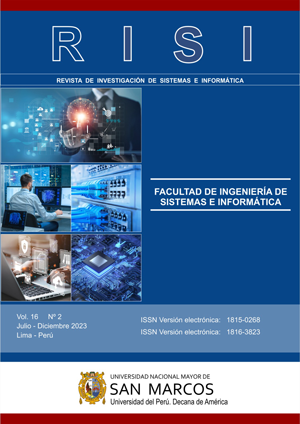Machine Learning model based on the Light Gradient Boosting Machine to predict the probability of default in customers of the Credit Card portfolio
DOI:
https://doi.org/10.15381/risi.v16i2.27140Keywords:
Credit risk, machine learning, data analysis, probability of default, credit card, proof of paymentAbstract
Bank loans are a widely used means of payment in recent times, more and more people are accessing products such as credit cards, loans, etc. Banks have implemented classic prediction models, the vast majority based on logistic regression since it allows great interpretability for the business and the effect of the model variables. The purpose of this research is to perform a predictive analysis on the probability of customer default in the credit card portfolio using a risk score. The dataset used is the so-called default of credit card clients Data Set from the UCI Machine Learning DB, the approach is quantitative and the methodology is descriptive analytics, techniques based on gradient boosters will be used to make the prediction, among the trained algorithms We have Logistic Regression with WOE, CatBoost, As a result, the light gradient enhancement machine (LightGBM) tuned with a Bayesian search was obtained, obtaining a GINI of 57.4, which improves by +6 points to the Logistic Regression with Woe and by +3p to XgBoost and CatBoost. Finally, obtaining the Gain and Shapley values made up for the lack of interpretability of the variables, allowing better decision making when evaluating clients. Likewise, as future work, it is intended to add unstructured variables that allow the Model's indicators to be improved.
Downloads
Downloads
Published
Issue
Section
License
Copyright (c) 2023 Eduardo Rafael Jáuregui Romero

This work is licensed under a Creative Commons Attribution 4.0 International License.
AUTHORS RETAIN THEIR RIGHTS:
a. Authors retain their trade mark rights and patent, and also on any process or procedure described in the article.
b. Authors retain their right to share, copy, distribute, perform and publicly communicate their article (eg, to place their article in an institutional repository or publish it in a book), with an acknowledgment of its initial publication in the Revista de investigación de Sistemas e Informática.
c. Authors retain theirs right to make a subsequent publication of their work, to use the article or any part thereof (eg a compilation of his papers, lecture notes, thesis, or a book), always indicating its initial publication in the Revista de investigación de Sistemas e Informática (the originator of the work, journal, volume, number and date).


